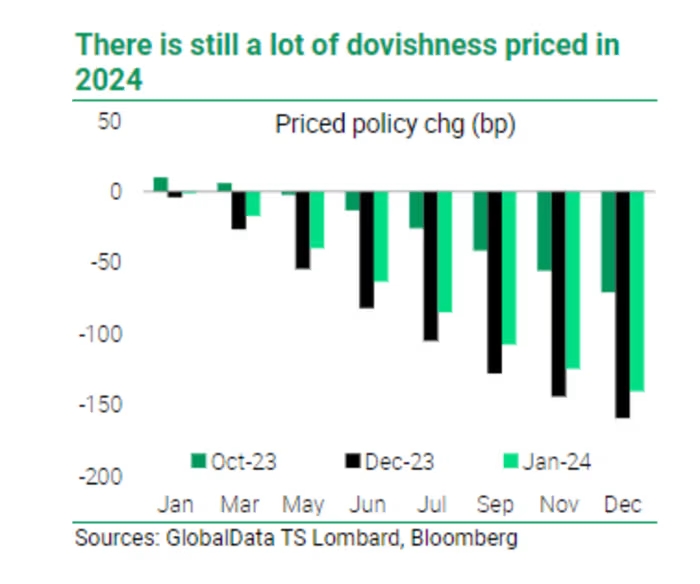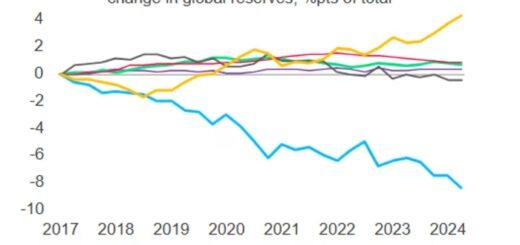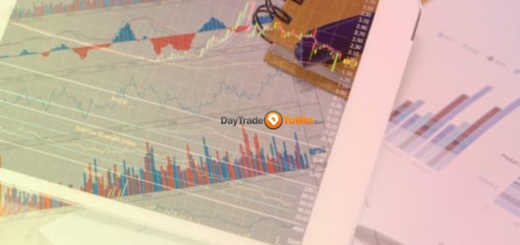2024 Outlook: The ‘Pain Trade’ and its Impact on Stock and Bond Market Gains
Misjudging the timing of rate cuts poses a significant risk, caution TS Lombard strategists
Amidst a robust “everything rally” driven by high expectations of Federal Reserve interest rate reductions to stave off a recession, the peril of inaccurately timing these cuts is underscored by Skylar Montgomery Koning and Andrea Cicione, strategists at GlobalData TS Lombard.
While investors may accurately assess the scale of anticipated Fed rate cuts, the strategists advise that the real danger lies in misreading the timing. In a client note on Wednesday, they observed, “The market is an average of participants’ views and, caught between outcomes, appears to be pricing in a soft landing with ~140bp of cuts in 2024.”

The GlobalData TS Lombard team argues that the roughly 200 basis points of rate cuts currently factored in for the entire easing cycle might be “too conservative rather than too aggressive,” particularly in the face of an economic downturn.
However, the main concern revolves around the optimistic market movements anticipating an early batch of rate cuts in 2024. The strategists highlight the potential risk that the market might not witness the expected priced-in cuts, thereby reversing the 4Q23 trends of a weaker dollar, stronger fixed income, and improved equities.
In the fourth quarter, the Dow Jones Industrial Average (DJIA) surged, achieving multiple record closes entering the new year. Similarly, the S&P 500 index (SPX) concluded Wednesday poised for its first record close in two years, according to Dow Jones Market Data.
In the fixed income sector, the 10-year Treasury yield (BX:TMUBMUSD10Y) retraced to around 4% in the new year after reaching a 16-year high of 5% in October. The prospect of sudden increases in borrowing costs for a substantial portion of the U.S. economy prompted a downturn in stocks, briefly erasing earlier gains in major U.S. bond benchmarks.
Despite the closely monitored Bloomberg U.S. Aggregate index boasting a 2.41% one-year return, with the iShares Core U.S. Aggregate Bond ETF (AGG) tracking a similar trajectory, the strategists caution of a potential sell-off if the market reevaluates Fed dovishness.
In the currency realm, the ICE U.S. dollar index (DXY), measuring the greenback against a basket of rival currencies, experienced a 3.5% decline over the past three months, per FactSet data. This decline occurred despite the dollar achieving its best first four days in a new year in nearly a decade.
While the dollar reached two-decade highs in 2022 during the Fed’s policy rate hikes, a shift toward rate cuts may lead to further weakening. The consensus anticipates a weaker dollar in 2024 due to substantial Fed cuts, with Koning and Cicione forecasting modest upside for the dollar. A weakened dollar can benefit major U.S. companies dependent on international sales, mitigating the impact of increased borrowing costs.
However, Fed rate cuts could also diminish the appeal of assets tied to the dollar for investors seeking yield.




